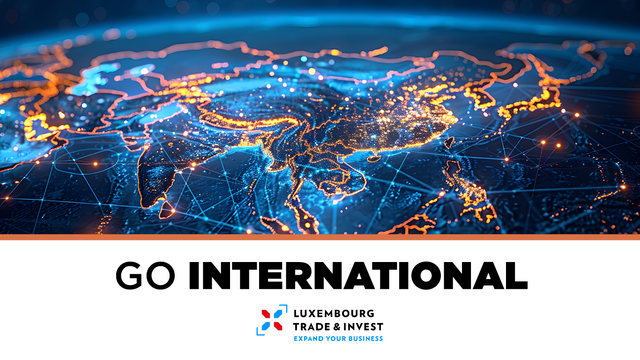
Chapitres
Lithuanian lands were united under MINDAUGAS in 1236; over the next century, through alliances and conquest, Lithuania extended its territory to include most of present-day Belarus and Ukraine. By the end of the 14th century Lithuania was the largest state in Europe. An alliance with Poland in 1386 led the two countries into a union through the person of a common ruler. In 1569, Lithuania and Poland formally united into a single dual state, the Polish-Lithuanian Commonwealth. This entity survived until 1795 when its remnants were partitioned by surrounding countries. Lithuania regained its independence following World War I but was annexed by the USSR in 1940 - an action never recognized by the US and many other countries. On 11 March 1990, Lithuania became the first of the Soviet republics to declare its independence, but Moscow did not recognize this proclamation until September of 1991 (following the abortive coup in Moscow). The last Russian troops withdrew in 1993. Lithuania subsequently restructured its economy for integration into Western European institutions; it joined both NATO and the EU in the spring of 2004. In 2015, Lithuania joined the euro zone, and it will join the Organization for Economic Cooperation and Development (OECD) in 2018.
Indicateurs clés
- Surface
- 65,300 km2
- Population
- 2,711,566 (July 2021 est.)
- Type de gouvernement
- semi-presidential republic
- Langues
- Lithuanian (official) 82%, Russian 8%, Polish 5.6%, other 0.9%, unspecified 3.5% (2011 est.)
- PIB
- $55.887 billion (2020 est.)
- Taux de croissance
- -0.9% (2020 est.)
- HDI
- 34
- Capitale
- Vilnius
Indicateurs macroéconomiques
After the country declared independence from the Soviet Union in 1990, Lithuania faced an initial dislocation that is typical during transitions from a planned economy to a free-market economy. Macroeconomic stabilization policies, including privatization of most state-owned enterprises, and a strong commitment to a currency board arrangement led to an open and rapidly growing economy and rising consumer demand. Foreign investment and EU funding aided in the transition. Lithuania joined the WTO in May 2001, the EU in May 2004, and the euro zone in January 2015, and is now working to complete the OECD accession roadmap it received in July 2015. In 2017, joined the OECD Working Group on Bribery, an important step in the OECD accession process.The Lithuanian economy was severely hit by the 2008-09 global financial crisis, but it has rebounded and become one of the fastest growing in the EU. Increases in exports, investment, and wage growth that supported consumption helped the economy grow by 3.6% in 2017. In 2015, Russia was Lithuania’s largest trading partner, followed by Poland, Germany, and Latvia; goods and services trade between the US and Lithuania totaled $2.2 billion. Lithuania opened a self-financed liquefied natural gas terminal in January 2015, providing the first non-Russian supply of natural gas to the Baltic States and reducing Lithuania’s dependence on Russian gas from 100% to approximately 30% in 2016.
Lithuania’s ongoing recovery hinges on improving the business environment, especially by liberalizing labor laws, and improving competitiveness and export growth, the latter hampered by economic slowdowns in the EU and Russia. In addition, a steady outflow of young and highly educated people is causing a shortage of skilled labor, which, combined with a rapidly aging population, could stress public finances and constrain long-term growth.
Source: The CIA World Factbook - Economic owerview
IMF Statistics:
| Subject descriptor | 2023 | 2024 | 2025 | 2026 | 2027 |
|---|---|---|---|---|---|
|
All Items, Consumer price index (CPI), Period average, percent change Percent (Units) |
8.685 |
0.852 |
3.576 |
3.059 |
2.514 |
|
Current account balance (credit less debit), Percent of GDP Percent (Units) |
1.099 |
2.473 |
2.082 |
2.149 |
2.25 |
|
Current account balance (credit less debit), US dollar US dollar (Billions) |
0.877 |
2.099 |
1.983 |
2.249 |
2.456 |
|
Exports of goods and services, Volume, Free on board (FOB), Percent change Percent (Units) |
-3.395 |
2.063 |
2.323 |
1.694 |
2.874 |
|
Gross domestic product (GDP), Constant prices, Percent change Percent (Units) |
0.428 |
2.726 |
2.733 |
2.933 |
2.129 |
|
Gross domestic product (GDP), Current prices, Per capita, US dollar US dollar (Units) |
27798.037 |
29378.609 |
32982.41 |
36225.11 |
38101.771 |
|
Gross domestic product (GDP), Current prices, US dollar US dollar (Billions) |
79.824 |
84.847 |
95.274 |
104.651 |
109.192 |
|
Imports of goods and services, Volume, Cost insurance freight (CIF), Percent change Percent (Units) |
-5.338 |
2.388 |
3.487 |
2.703 |
2.866 |
|
Unemployment rate |
6.875 |
7.133 |
6.6 |
6.1 |
6.0 |
Source: IMF Statistics - Lithuania
Le Luxembourg et le pays
Existing conventions and agreements
Non double taxation agreement
In order to promote international economic and financial relations in the interest of the Grand Duchy of Luxembourg, the Luxembourg government negotiates bilateral agreements for the avoidance of double taxation and prevent fiscal evasion with respect to Taxes on Income and on fortune with third countries.
- Convention from 22.11.2004 (Memorial 2006, A No.65, p.1300)
- Effective as of 01.01.2007 (Memorial 2006, A No.65, p.1300)
- Amendment of the Convention from 20.06.2014 (Memorial 2015, A No.232, p.5116)
- Law from 24.12.2015
- Effective as of 01.01.2016
Air Services agreement
None
Informations supplémentaires
Foreign Trade
The Statec Foreign Trade statistics provide information on the trade of goods - by product and by country. This information is collected respectively through the INTRASTAT declaration and on the basis of customs documents.
You can see the statistics on the website of the Statec.
Contact points in Lithuania
Embassy of the Grand Duchy of Luxembourg in Lithuania
Ambassador with residence in Warsaw: Mr Paul SCHMIT
ul. Sloneczna 15
00-789 Warsaw
Poland
Tel.: (+48) 22 507 86 50
Fax: (+48) 22 507 86 61
E-Mail: varsovie.amb@mae.etat.lu
Website: varsovie.mae.lu
Honorary Consuls
Honorary Consul with Jurisdiction over the Constituencies of Kaunas, Alytus, Marijampole, Taurage, and Klaipeda:
Mr Ramunas GARBARAVICIUS
Vaizganto 30
LT-44229 Kaunas
Poland
Tel.: (+37) (0) 621 762 15
E-Mail: kaunas@consul-hon.lu
Honorary Consul with jurisdiction over the Constituencies of Vilnius, Utena, Panevezys, Siauliai. and Telisi:
Ms Vilija VAITKUTE PAVAN
Jogailos 9
LT- 01116 Vilnius
Poland
Tel.: (+37) (0) 698 82026
E-Mail: vilnius@luxembourgconsulate.lt
Source: Ministry of Foreign Affairs of Luxembourg
Country risk as defined by Office du Ducroire for Lithuania
Ducroire is the only credit insurer covering open account deals in over 200 countries. A rating on a scale from 1 to 7 shows the intensity of the political risk. Category 1 comprises countries with the lowest political risk and category 7 countries with the highest. Macroeconomics experts also assess the repayment climate for all buyers in a country.
Link: ODL - Lithuania



